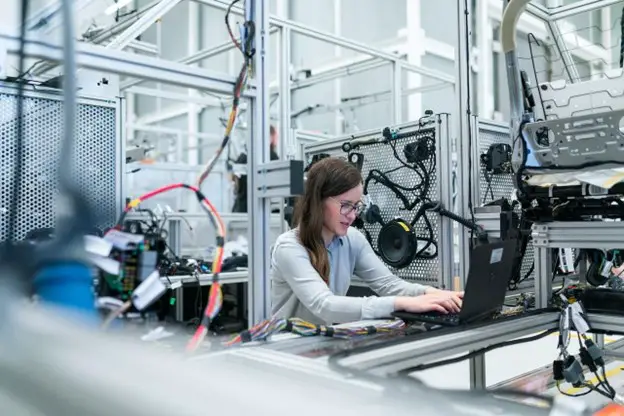Estimated reading time: 5 minutes
When it comes to streamlining production, manufacturing, and creating quality products for suppliers and consumers, the right technology is essential. In today’s leading industries, production leaders are tasked with finding equipment and software that delivers accurate results with quick turnarounds — minimizing lead times and increasing profits as a result.
One of the most effective ways to achieve this is to invest in technology and machinery that is designed to gather data in a secure and efficient manner. The goal of using this technology is to increase productivity without sacrificing quality.
Coordinate measuring machines are changing the way production and manufacturing industries measure and build the parts they need for their respective production cycles. Its technology is improving lead times, reducing costs, and opening up new doors for innovative production techniques.
Understanding CMM technology and the various advantages of bridge CMM machines and their software is the first step. In this guide, we’ll take a closer look at the functions CMMs carry out on production floors, their technologies, and the industries that are taking advantage of these innovations.
CMM Basics
Before we can discuss its technologies in more depth, it’s important to understand the basic functions of coordinate measuring machines and how they apply to their respective industries.
A coordinate measuring machine is a piece of equipment that measures the dimensions of a physical object. The object is either placed on an area within the machine or is left as is in the production line — this is often the case for delicate objects or parts that cannot be moved due to production, and a portable CMM is used. Using probes, data points are collected, and the object is reconstructed digitally using CMM software.
CMM Technologies
Coordinate measuring machines use varying technologies to collect three-dimensional data points. These technologies are an integral part of the process and are designed to enhance machinery capabilities and productivity on the shop floor — ensuring parts are accurately designed.
Probes
Probes are devices that take physical measurements and convert them to electrical signals. This is achieved by using several measuring systems within the structure of the probe. A CMM probe uses diverse technologies to collect data points and is available in three distinct designs — touch-trigger, scanning, or displacement measuring.
The touch-trigger probe is one of the most widely used CMM probes across industries. As its name indicates, this type of probe makes contact with the part it’s measuring. Once it’s made contact, it will send a signal with coordinates to the measuring machine. This process is then repeated until all measurements have been gathered.
On the other hand, displacement-measuring probes do not make direct contact with the part but instead hover over the surface, transmitting continuous flows of information to measurement systems. Lastly, a proximity probe operates similarly to a displacement probe, using capacitive, laser or video measurement tech to complete its process.

Software
Software in any type of machinery or piece of technology is crucial, and the same case can be made for CMMs. Without adequate software, the measurements collected by the machine’s probe are rendered useless.
CMM software comes with many advantages, including the fact that it can conduct measurements without requiring the machine operator to have in-depth mathematical knowledge or be a skilled metrology specialist. When compared to manual measurement methods, CMM software collects data points faster and more efficiently — with a lower risk of error. This ensures greater measurement accuracy.
The type of CMM software that’s best for production and manufacturing industries will often vary depending on measurement applications. When measuring simple 3D shapes, for example, a basic graphic software system is an adequate choice. For more complex measurements, operators will need more advanced software.
Industries Utilizing CMM Technologies
Coordinate measuring machines are changing the way industries create their products and meet their deadlines. With its advanced probing and software technologies, industries like these are seeing enhanced results.
- Aerospace
- Healthcare
- Engineering
- Automotive
The result of implementing these advanced technologies is a more accurate, efficient, and production shop floor.
The Benefits of CMM Technologies
CMM technologies are changing the way today’s industries operate for the better. With their advancements, they allow operators and production leaders to streamline their efforts and turn out quality products in a fraction of the time.
Automation
While there are benefits to doing things manually, when it comes to gathering measurement data, CMM probes and software allow operators to take their hands off the wheel without losing control. Automotive software and probing systems can free up precious time that needs to be spent elsewhere on the production line.
Consistency
Since CMM software is designed to collect measurements and compile results, there is a greater level of consistency and accuracy, which is essential when designing parts for large sectors like aerospace or healthcare.
Investing time and resources into CMM technology is one of the smartest things you can do for your business.
Share this content:
